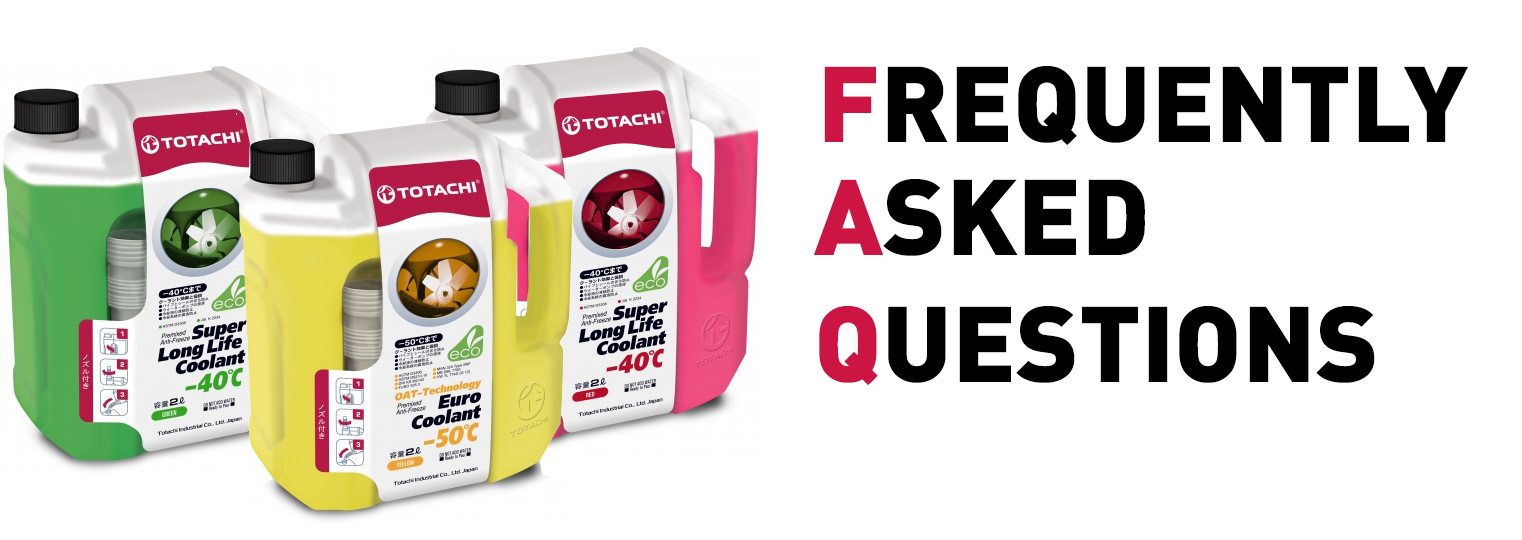Antifreeze and Coolant FAQs
11.10.2017

How are coolants and antifreeze different?
Contrary to popular belief, coolant and antifreeze are actually the same product. The different product names are used for marketing coolant/antifreeze in various regions. For example, in hot weather climates, most companies would market their product as a coolant, whereas in extremely cold climates, they would market it as antifreeze. The formulation works both to prevent freezing in cold temperatures and to cool down in hot temperatures.
What is the purpose of coolants/antifreeze?
The purpose of coolant/antifreeze is to control the temperature of fluids and various engine parts in all weather conditions. Coolant/antifreeze are special fluids with additives as it needs to remain in liquid-state in extreme temperatures, both hot and cold. Coolant/antifreeze for cars also needs to have anti-corrosive properties in order to protect the metallic surfaces of the engine’s various parts.
What are coolants/antifreeze made of?
Before World War II, water was used as a form of coolant while antifreeze was used solely to control freezing during cold weather. However, the development of high performance engines and mixed-metal engines required improved coolants with higher boiling points and corrosion inhibitors which led to the adoption of glycol in coolant and antifreeze properties.
Can we use water to replace coolant/antifreeze?
No, it is not advisable. Although water is effective to cool the engine as it has a high heat transfer rate, water also has a lower boiling point as compared to coolant. It is therefore not practical for cooling engines as it easily evaporated during operation and requires frequent top-ups. If users do not constantly check and top-up the water, it will lead to insufficient protection of radiator. On the other hand, water has a freezing point of 0°C which is not feasible for users in colder climates. Moreover, water does not contain corrosion inhibitors which is required for mixed-metal engines to protect against corrosion.
There are 3 types of coolants/antifreeze. What do they represent and how are they different?
- IAT (Inorganic Acid Technology)
- This type of coolant/antifreeze contains phosphate and silicate corrosion inhibitors which help protect the engine and radiator.
- This coolant should be flushed out every 30,000 miles or every year.
- OAT (Organic Acid Technology)
- This type of coolant/antifreeze does not contain phosphate and silicate corrosion inhibitors. However, it can last much longer than IAT.
- Special additives are added to prevent corrosion and rust.
- This coolant should be flushed out every 150,000 miles or every 5 years.
- HOAT (Hybrid Organic Acid Technology)
- This type of coolant/antifreeze contains some silicate to help prevent corrosion, along with other additives.
- Like OAT, this should be flushed out every 150,000 miles or every 5 years.
How do I know which coolant/antifreeze to use for my vehicle?
Car manufacturers choose a particular type of coolant/antifreeze for their vehicles. It is suggested to follow your manufacturer’s advice.
Totachi Series Antifreeze and Coolant
All Totachi coolants are manufactured with ethylene glycol and additives package, which is required for modern Japanese and European vehicles, and Heavy Duty mobile application. There are three ranges of Totachi coolant/antifreeze available in the market:
- TOTACHI SUPER LONG LIFE COOLANT (Red)
- Ideally suited for gasoline and diesel engine’s cooling systems of popular Japanese car brands such as TOYOTA, Lexus and Daihatsu
- To be flushed out every 150,000km or every 3 years
- TOTACHI SUPER LONG LIFE COOLANT (Green)
- Used in cars from major Japanese manufacturers such as Honda, Nissan, Mitsubishi, Mazda, Suzuki, Subaru, Isuzu
- To be flushed out every 150,000km or every 3 years
- TOTACHI® EURO COOLANT OAT-Technology (Yellow)
- An optimal choice for cooling systems of highly loaded gasoline and diesel engines of modern heavy duty vehicles and modern passenger cars, which require ОАТ-Technology based coolants
- To be flushed out every 250,000km or every 5 years
Technical Data Sheet (TDS) of our coolants/antifreeze available for download on our coolant/antifreeze product page.
For more enquiries on the product selection, please consult our distributors in your country or email us at info@totachi.com for assistance.
